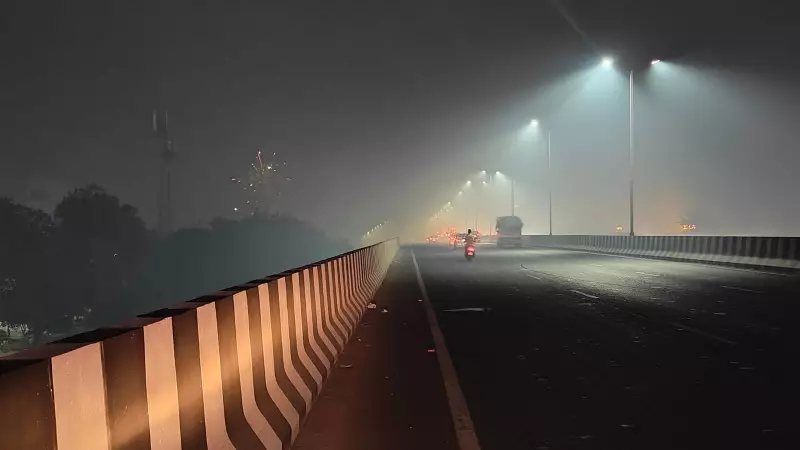
The festival of lights turned into a night of hazardous breathing conditions in Ahmedabad as air quality plummeted to dangerous levels during Diwali celebrations. Monitoring stations across the city recorded particulate matter concentrations that shattered both Indian and international safety standards, transforming the festive atmosphere into a public health concern.
Alarming Pollution Spike During Festivities
Data collected from multiple air quality monitoring stations revealed a disturbing trend. The levels of PM2.5 and PM10 particulate matter crossed not only the Indian National Air Quality Standards but also the more stringent World Health Organization guidelines. This dramatic deterioration occurred despite various awareness campaigns about celebrating an eco-friendly Diwali.
Key Findings from Monitoring Stations
Several areas within Ahmedabad showed particularly concerning readings:
- PM2.5 levels reached multiple times the safe limits
- PM10 concentrations showed similar alarming patterns
- Multiple monitoring stations reported consistent pollution spikes
- The pollution persisted for several hours during and after celebrations
Health Implications for Residents
The severe deterioration in air quality poses significant health risks, particularly for vulnerable groups. Medical experts express concern about the impact on children, elderly citizens, and individuals with pre-existing respiratory conditions. The high concentration of fine particulate matter can penetrate deep into lungs and even enter the bloodstream.
Immediate and Long-term Concerns
Healthcare professionals warn that exposure to such pollution levels can cause:
- Immediate breathing difficulties and throat irritation
- Aggravation of asthma and other respiratory diseases
- Increased risk of cardiovascular problems
- Long-term damage to respiratory systems with repeated exposure
Comparing Safety Standards
The fact that pollution levels exceeded both Indian and international benchmarks highlights the severity of the situation. While Indian standards provide one measure of air quality, the breach of WHO guidelines indicates an even more critical public health situation that demands immediate attention and action from authorities and citizens alike.
As Ahmedabad wakes up to the aftermath of the Diwali celebrations, the visible haze and persistent poor air quality serve as a stark reminder of the environmental challenges that accompany traditional festivities. The situation calls for a balanced approach that preserves cultural traditions while prioritizing public health and environmental sustainability.





